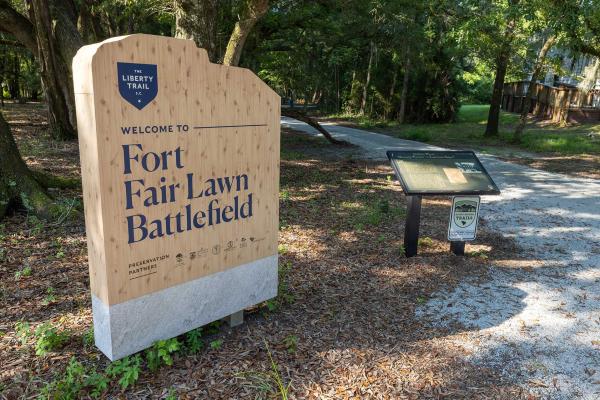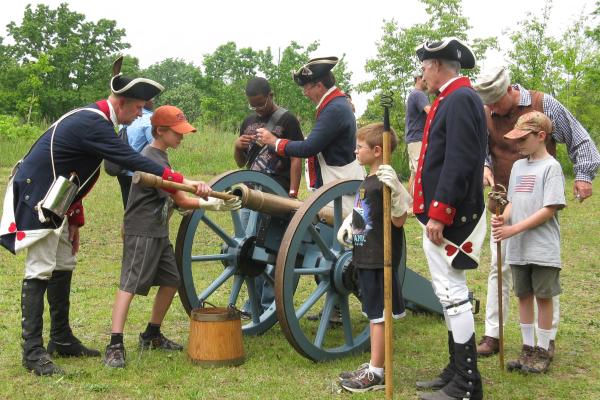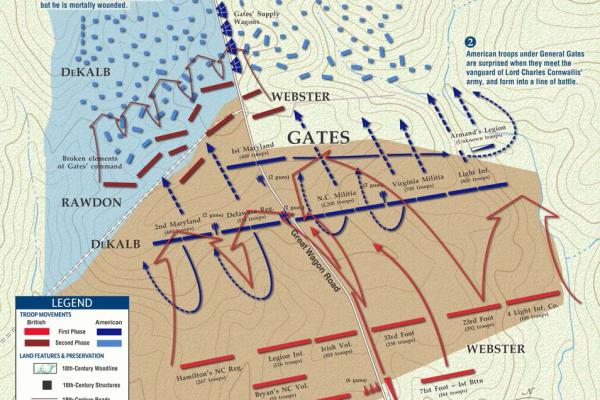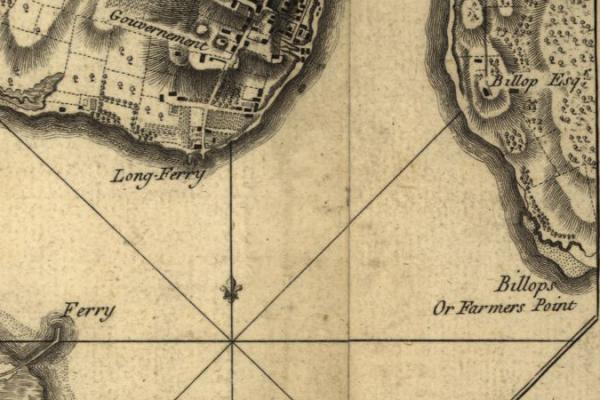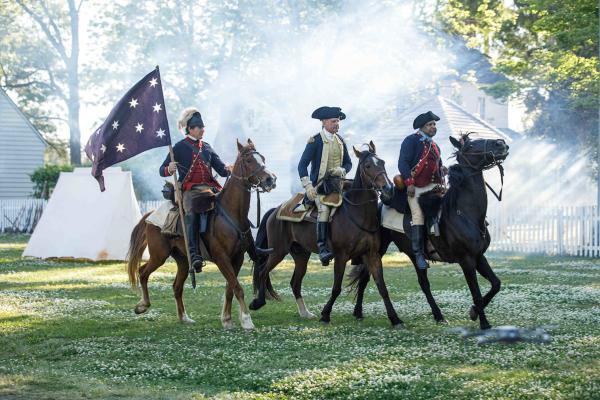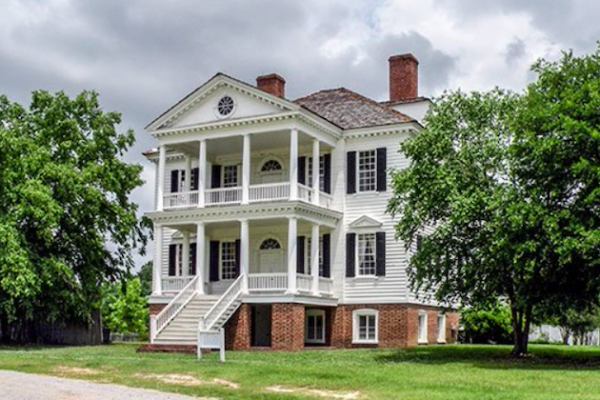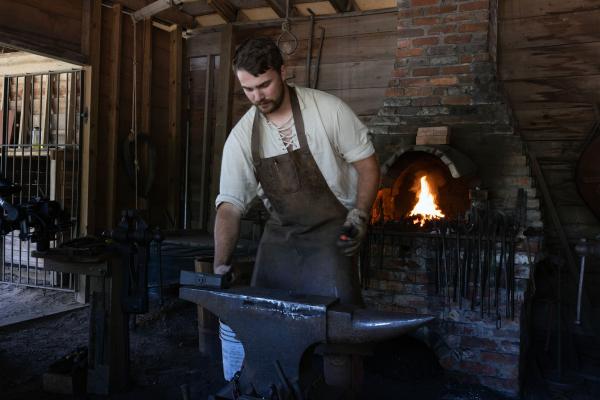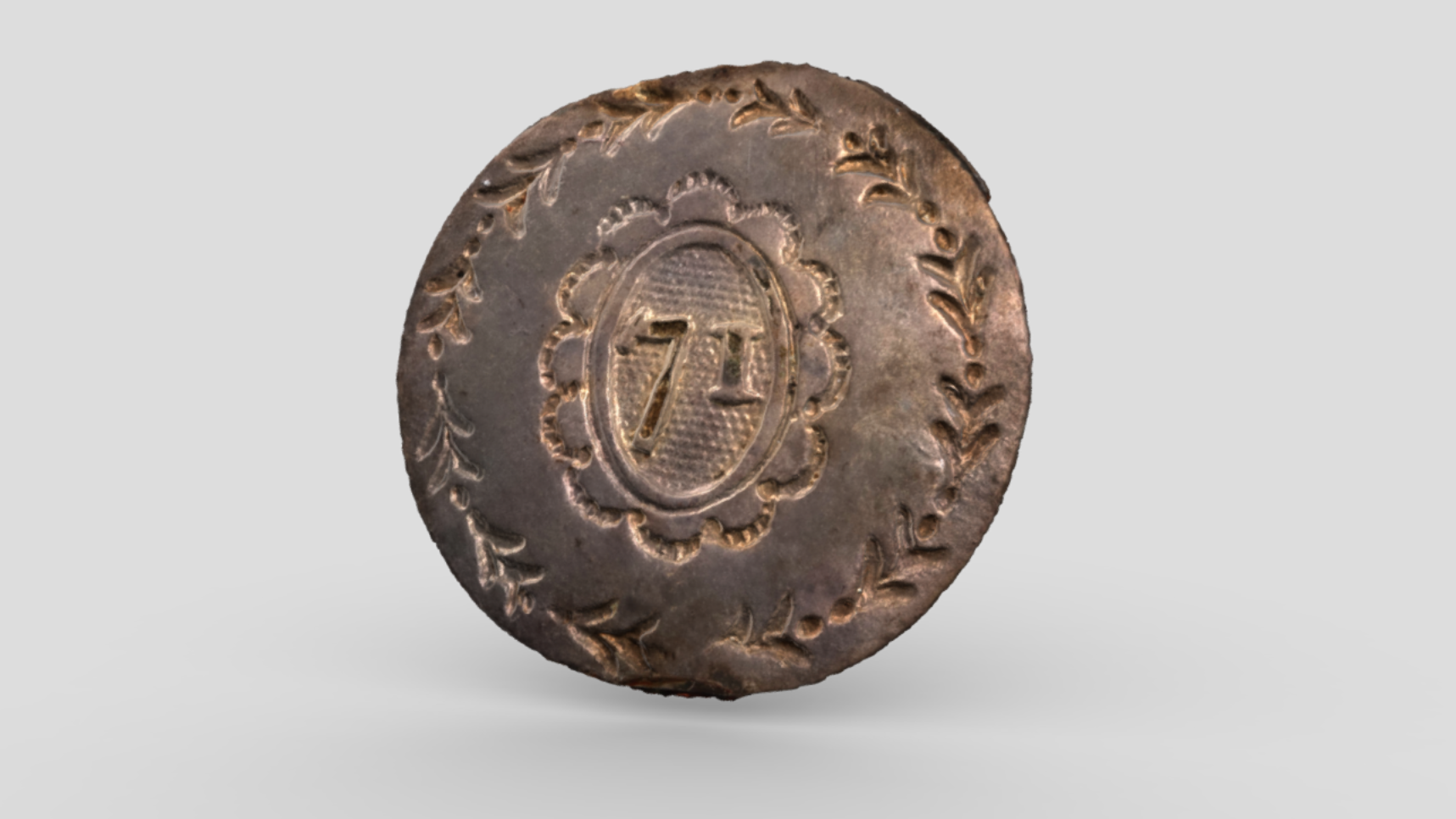
A Revolutionary War “Lost and Found”
It is always frustrating to lose things—buttons, gloves, socks, keys—especially when one is away from home. Often the dropped or misplaced item could literally be anywhere, and an identical replacement isn’t easily found. If you’ve ever agonized about where something could have gone to, imagine the frustration of a soldier in the field, who can’t button his uniform, keep his hands and feet warm, or open his storage locker. Such soldiers surely existed at Fort Fair Lawn, which was a British outpost during the Revolutionary War, located about 30 miles from Charleston. Archaeological surveys of the site conducted in 2018 revealed a well-preserved Revolutionary War earthen fortress, as well as scores of buried objects, making this historic military base a veritable lost and found.
One find in particular—a silver-plated officer’s button from the 71st British Regiment of Foot—must have been sorely missed by its owner. Though tarnished now, it features the regiment number—71—in an oval at the center, with a flower-like border etched around it. A decorative vine encircles the outer edge of the button. It might have adorned a short scarlet coat with white collar, lapels, and cuffs—part of the uniform of the rugged Scottish Highlander unit fighting for the British far from home. Unofficially known as “Fraser’s Highlanders,” after their founder, Simon Fraser, the men of the 71st were also issued wool tartan kilts, patterned hose, and heavy broadswords, all of which proved completely impractical in North America. They quickly switched to trousers, gaiters, and muskets.
The 71st Regiment of Foot was active in South Carolina from 1779 through 1781. They fought at the Siege of Charleston in March 1780, the Battle of Camden in August 1780, and the Battle of Cowpens in January 1781. Their ranks were severely depleted at the bloody Battle of Guilford Court House in March 1781, and their last action was at the Siege of Yorktown, where Lord Cornwallis surrendered to the Continental Army in October 1781. But while they served close by, the Highlanders were never stationed at Fort Fair Lawn. So, how did this elegant button land there? Without knowing anything about the button’s owner, we can only guess.
Perhaps the Scottish officer who lost the button visited Fort Fair Lawn as part of a mission for the British command. His button may have come loose but he had no time to sew it. Or, maybe the button was lost at another camp and the silver orb caught the eye of an observant soldier. The finder might have realized its value and pocketed it, knowing that it’s always good to have extra buttons. Perhaps he brought it to Fort Fair Lawn, where it dropped during military exercises or in the midst of the surprise Patriot attack there on November 7, 1781. During that raid, the earthen fort was spared but the field hospital, housed in the property’s former plantation house, was seized and its residents were taken prisoner. A week later, the British were recalled to Charleston, and Fort Fair Lawn was abandoned.
For Fair Lawn was eventually burned to the ground, but nearly 250 years later, signs of life exist—shoe buckles, nails, musket balls—and the silver-plated button of an officer faithfully serving his King on foreign shores. Though seemingly trivial, these weathered articles from history’s lost and found bear witness to those individuals who made sacrifices in times of war and help historians reconstruct what life was like during the nation’s struggle for independence.
--Amy Pastan for The Liberty Trail
Uncovering History
We invite you to visit the preserved locations along the Liberty Trail and to immerse
yourself in the extraordinary events that determined the fate of a nation.
